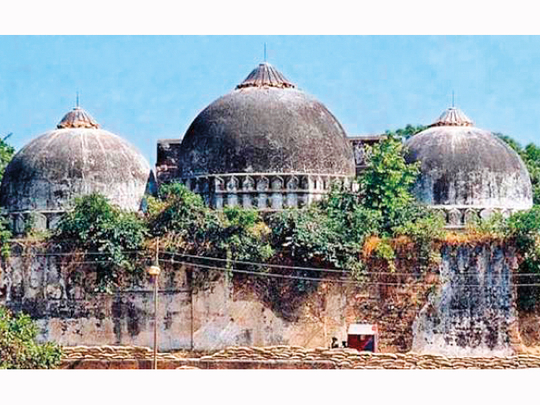
New Delhi: In a judicial first for the country, the Chief Justice of India (CJI), J.S. Khehar, yesterday asked the two parties in the longstanding Ram Janmabhoomi-Babri Masjid dispute to resolve their differences amicably, and offered to mediate out of court.
“Give a bit, take a bit. Make an effort to sort it out. These are issues best decided jointly. It is an issue of sentiment. First sit together and sort it out. Moderators from both sides can hold a meeting,” Justice Khehar said.
This was not a judicial order, but just an offer by the CJI.
Timeline of the Babri mosque dispute
Bharatiya Janata Party (BJP) leader Subramanian Swamy, whose application to be impleaded as a party to the dispute had earlier been rejected, suggested yesterday that the Ram temple should be built at the disputed land in Ayodhya in Uttar Pradesh (UP) and that the mosque be built across the Saryu river.
“There are also many from the Muslim side who want an amicable solution to the dispute. The place where [deity] Ram was born cannot be changed. [Prayers] can be done anywhere,” Swamy said in court.
Swamy said it was difficult to make both communities sit together and judicial intervention was needed.
“If you want some principal mediator, we can arrange. If you want, I can also do that, but I will not sit in the Bench,” Justice Khehar said.
Reacting to the CJI’s offer, Joint Convenor of Babri Masjd Action Committee SQR Ilyas said talks had not yielded any results so far.
“We do not agree to CJI as mediator. The issue has to be settled on the basis of legal position, not sentiments,” Ilyas said. He said several talks had been conducted before but no results were achieved.
“Even a dialogue between the Vishwa Hindu Parishad and Babri Masjid Committee failed to yield any results,” he added.
“Whenever talks have taken place, VHP has claimed that this land rightfully belonged to Ram. We do not agree to the proposal that the Chief Justice of India will act as a mediator,” Ilyas said.
Counsel for Ram Lalla ( Ram as a party) Ranjana Agnihotri said the question of negotiation did not arise and only a verdict in favour of one party or an ordinance could solve the dispute.
“When we did not agree to the one-third distribution of land between all the three parties then why should we agree to the question of negotiation?,” he said.
“It is a land where Ram Lalla was born and there is no question of any mosque there. We have waited for so many years, and we can wait for a few more, but a verdict has to be delivered.”
Meanwhile, hardline Hindu body Vishwa Hindu Parishad (VHP), which has been at the forefront of the Ram temple construction movement, yesterday decided to re-launch the campaign.
VHP said it will launch a movement called ‘Ram Mahotsav’ from March 26 to April 16.
“The Hindu New Year begins on March 28. Two days before the New Year, we will launch a movement called Ram Mahotsav. During this movement, we will go to villages and educate people on the kind of life that Lord Ram led and how they should also emulate it. We will also launch Jagran Yatras in each block headquarter, demanding that a Ram Temple be built in Ayodhya as soon as possible. Now there is no reason to delay the construction of the temple,” VHP zonal president for Western UP and Uttarakhand Ishwari Prasad told media.
He said it will be a nation-wide movement and covering a total of around two lakh (200,000) villages all over the country.
“The main thrust of the movement will be in Uttar Pradesh, since that is where the birthplace of Ram is. Out of the two lakh [200,000] villages, around 70,000 will be in UP. Soon, you will see the saffron flag atop every house in these villages,” Prasad stated.
VHP was happy that the offer of the apex court coincided with the UP state getting Hindutva (Hinduism) icon Yogi Adityanath as its new chief minister.
Prasad said he was confident that Adityanath will extend support to the Ram temple construction movement.
“BJP is in power in the Center and in the state. Ram devotees from over three lakh villages have sent stones over the years and three-fourths of these stones are ready. The Ram temple fund is also ready. However, the temple must only be built on the exact spot where the Lord was born. The CM must not compromise on that front at all,” Prasad added.












